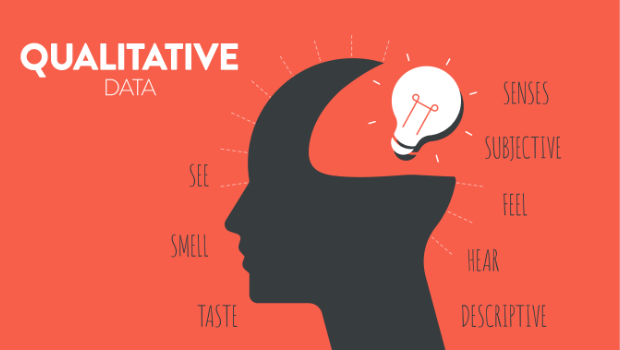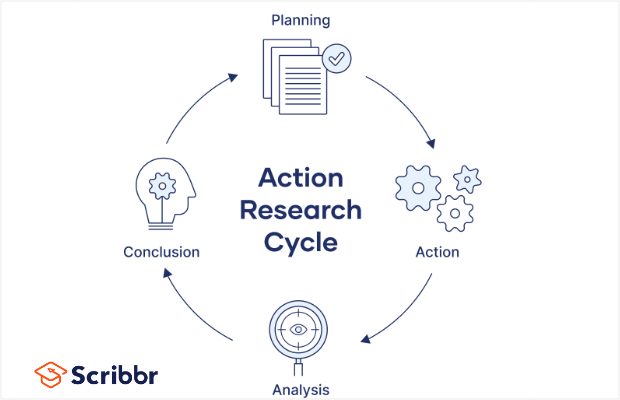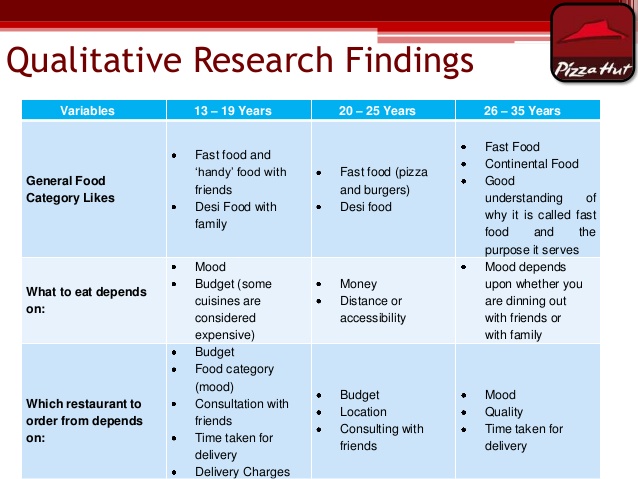Do you want to learn about the types of qualitative research and some examples of methodologies?
Qualitative studies are vital to the market research process. They provide an understanding of the reasons and motivations behind consumer decisions. You can use this information to improve your marketing and increase sales.
What does that mean for your business?
If you have a product that isn’t selling as well as you expected, qualitative research can help you understand why. Or, if you’re launching a new marketing campaign, qualitative studies can help you create ads that will entice your target audience.
If you’re new to this kind of market research, you’re in the right place.
In this guide, you’ll learn the basics of qualitative market research. We’ll also share how your business can use qualitative data to better appeal to your customers.
What is Qualitative Research?
Qualitative research is any research that provides subjective, non-numerical information. It focuses on people: their experiences, beliefs, and behaviors. It’s generally conducted using observation or unstructured questioning.
Qualitative research is used across many fields and industries, including sales, marketing, health care, education, and social sciences.
Qualitative vs. Quantitative Research
You likely hear the term “qualitative” used in contrast with “quantitative.”
Quantitative research generates specific numerical data. Its goal is to quantify and generalize the results of a study through numbers, percentages, and statistics. Quantitative research seeks to answer the what, where, when, and who of decision-making.
Qualitative market research, on the other hand, provides insights into the deeper motives behind consumer purchases. Qualitative research answers the why and how.
Why Use Qualitative Research?
Why should your business use qualitative research as opposed to quantitative research?
Well, first of all, you should not use qualitative market research instead of quantitative. The 2 are complementary to each other.
Qualitative research on its own is not conclusive. However, you can use it to:
- Explain quantitative research results.
- Conduct market research when traditional surveys are unavailable. For instance, when your topic involves sensitive or complex questions.
- Conduct market research when more structured research is not possible.
Let’s look at an example of combining quantitative and qualitative research.
For instance, we’ll say that your business wants to conduct research to improve your website.
Quantitative research would give you information such as:
- The number of website visitors
- The length of time users stay on each page
- The number of leads generated from each email signup form
- More quantitative data, such as online shopping statistics and conversion rates
This information is all important data about user behavior. But it doesn’t give you the why behind this behavior.
Qualitative research fills in the rest of the picture with information such as:
- Which parts of your website users find difficult to use
- Whether users find your lightbox popups to be intrusive
- Which special offers and coupon codes shoppers find exciting
- More subjective information about how users view the style, relevance, and usability of your site
A complete website study should include both quantitative and qualitative research. Then, you can improve your website based both on hard numbers and users’ experiences and opinions.
7 Types of Qualitative Research
Qualitative market research collects subjective feedback and observations from consumers and users. However, as with most data collection, it’s much more complicated in practice.
Experts divide qualitative research into 7 main types. These types of qualitative research are also sometimes called research approaches or research designs.
Below, we’ll quickly explain the basics of each qualitative research approach before diving into qualitative research methods you can use for your market research.
Don’t feel like you have to memorize and fully understand all of these approaches. However, reviewing them will give you a good introduction to the field of qualitative research.
1. Phenomenology
Phenomenological research is based on the root word “phenomena.” It seeks to discover how individual people view specific experiences. Phenomenology focuses on lived experiences and individuality instead of generalizations about larger groups.
2. Ethnography
In the ethnography approach, researchers immerse themselves in a specific culture to gain qualitative data through observation and interaction. Ethnographic research provides more in-depth and nuanced information than, say, questionnaires or interviews. This approach also provides data about specific demographics.
3. Grounded Theory
The term “grounded theory” essentially describes the order in which researchers develop a theory.
In most other types of qualitative research, researchers start with a hypothesis and then conduct a study to test that hypothesis. However, researchers using grounded theory begin with qualitative data, such as interviews and observations, and then analyze it to develop a theory. This approach is helpful when you have no working theory for why consumers behave in a certain way.
4. Case Study
Case studies are in-depth examinations of a business, process, product, person, or group of people. They also often include quantitative research, but they become qualitative when they focus on the reasons behind that data and the participants’ individual experiences.
For instance, in our case study of AdamEnfroy.com, we present subjective feedback in addition to quantitative data:
See more examples of OptinMonster’s case study research.
5. Historical Research
The historical approach to research is reasonably self-explanatory. Researchers analyze data from the past to form expectations about the present and future. In qualitative market research, this might mean analyzing consumer feedback from throughout the history of your company or industry.
6. Narrative Research
The narrative approach seeks to tell a story about people’s experiences. Researchers conduct interviews and collect observations over a period of time. Then, they use this information to develop a narrative about the experiences of an individual or small group of people.
7. Action Research
Action research aims to investigate and solve a specific, immediate problem. This type of research is cyclical. Researchers apply an action, analyze the data, draw conclusions, and start again.
Now that you have an overview of the different types of qualitative research, we’ll explore some practical examples of research methodology.
6 Methods for Your Qualitative Market Studies
The approaches above are fairly abstract. Now, we’ll share some concrete qualitative methods to collect data for your business. Even beginners and small businesses can use these methodologies.
Here are some of the most common types of qualitative research methods to give you greater insight into your customers. Next time that you are ready to launch a new product or start a new marketing campaign, try out one or more of these methods. You’ll get valuable feedback that will help you succeed.
1. In-Depth Interviews Let You Dig Deep
In-depth interviews (IDIs) are a great way to get detailed consumer feedback. An IDI can be conducted over the phone, in person, or via webcam, using services like Skype or Zoom.
Webcam interviews have become the most common qualitative research method. 34% of researchers report regularly conducting webcam IDIs as 1 of their top 3 data collection methods.
Regardless of your interview method, your IDIs should focus on your ideal user or an existing customer. You ask each person a series of research questions and follow-ups to learn what motivates them to buy a product like yours.
For qualitative research, you should always ask open-ended questions. Avoid simple yes/no questions that provide only quantitative data.
You should go into the interview with some questions prepared, but you shouldn’t stick to a script. If the participant says something interesting, ask follow-up questions that dig deeper.
Here are a few initial questions you could ask:
- What frustrates you about [your topic]?
- If I had a magic wand and could give you the perfect product, what would it look like?
- Have you bought [your type of product] before? If so, what motivated you to buy it?
IDIs provide detailed information about individuals. Therefore, they are especially common in the phenomenology and narrative types of qualitative research.
2. Focus Groups Allow for the Exchange of Ideas
Like IDIs, focus groups can be face-to-face or online. These groups usually involve sample sizes of 6-10 people. They provide a safe and comfortable environment for your users to talk about their thoughts and feelings surrounding your product.
The advantage of in-person focus groups is that you observe the consumer’s verbal and non-verbal reaction to your product or advertising. Group members can also bounce off each other’s thoughts and ideas, which means you’ll get even greater insights.
You can use focus groups to:
- Test a new product or website
- Explore the general concept for your product
- Evaluate your advertising copy and imagery
- Explore new packaging ideas
Online focus groups are similar to in-person ones. They’re more cost-efficient, allow you to include more people, and are less time-consuming to organize. Now that more people are comfortable with Zoom and Skype, online focus groups are more accessible than ever before.
You can also use social media to your advantage. Create a community of people interested in your topic and use it to foster a conversation. Then, observe the dialogue. You’ll gain a lot of interesting insights!
3. Shopping Observations, or “Shop-Alongs,” Give Real-Time Insight
An in-person observation of shopping behavior lets you watch the consumer react to your products in-store. With a shop-along, you get to see consumers’ real-life shopping behavior. Because you see immediate reactions, this method provides different insight than a written survey.
These qualitative studies highlight problems with shelf displays, clutter, or out-of-stock products. You may also interact with consumers to get deeper insights during the shopping process. You can get real-time feedback on package design, for example.
4. In-Home Videos Show Realistic Product Use
In-home videos allow you to observe how users interact with your product in real life, in their own homes.
This research method’s advantage is the setting of the participant observation. You can see your user’s behavior in a natural, comfortable environment. You’ll get a more realistic view of how people use your product.
5. Lifestyle Immersion Lets You Hear Real-World Dialogue
Lifestyle immersion is when you attend an event, such as a party or a family gathering. This research method gives you an uninterrupted view of users’ attitudes and behaviors. Immersion is another excellent way to get candid insight in a comfortable, familiar setting.
During these activities, observe your users having a dialogue with their friends. Listen to these real-world conversations to learn about consumers’ desires, frustrations, and motivations.
6. Journal or Diary Studies for Honest Feedback
Have your user or potential customer keep a journal or a diary to document their experience with your topic or product. Users may be more likely to be completely honest when they’re not face-to-face with an interviewer or moderator.
Journals can be handwritten or digital. Either way, it will capture your user’s voice, which is extremely valuable for optimizing your marketing copy.
3 Tips for Qualitative Data Analysis (to Help You Understand Your Customers)
Using the methods and types of qualitative research discussed above, you can gather excellent information about consumers’ opinions, experiences, and behaviors. The next step is to analyze your data.
Since qualitative data is unstructured, it can be tricky to draw conclusions, let alone present your findings. While qualitative data is not conclusive in and of itself, here are a few tips for analyzing qualitative research data.
“Top 5 Best Survey Data Visualization Tools (In-Depth Comparison)
1. Summarize the Key Points
For interviews and focus groups, have the moderator write up some key points from the discussion. For example: “Common concerns among participants about our pizza were cheese overuse, greasiness, and bland sauce.”
Here is an example of a qualitative summary from a market research project for Pizza Hut Pakistan
2. Code Responses
Coding is the process of organizing and labeling your qualitative data into categories. You can “code” your unstructured data into labels you can summarize with tables or charts.
For example, a researcher might have asked the open-ended question, “How often do you wear a watch?”
Every respondent’s answer would likely be a little different. But you could code them in categories such as:
- Never
- Once in a while
- Frequently
- Everyday
This process gives you coded data sets to analyze and report.
3. Create a Word Cloud
Create a “word cloud” out of the keywords used by consumers. Put your field notes into a word cloud generator like WordClouds.com. In your cloud, the words that research participants used most often will be the largest. You’ll be able to spot the most prominent words easily.
Use Qualitative Research to Improve Marketing and Sales
You can use these qualitative research types, methods, and analysis strategies to understand your users and customers. Qualitative data collection will help you improve your product development and marketing strategy, leading to more sales and revenue.
If online surveys are part of your research process, check out our survey best practices.
Once you clearly understand your customers, apply what you’ve learned to your email marketing strategy. Using in-depth qualitative data, you’ll generate more leads and sales than ever before.

















Add a Comment